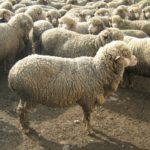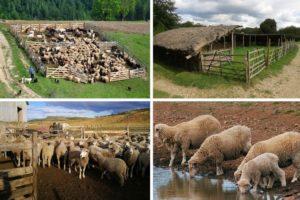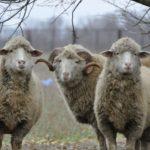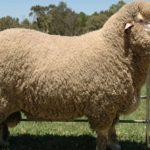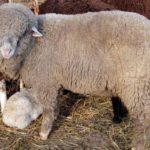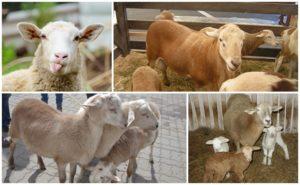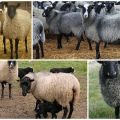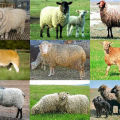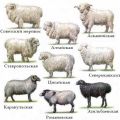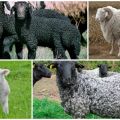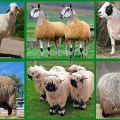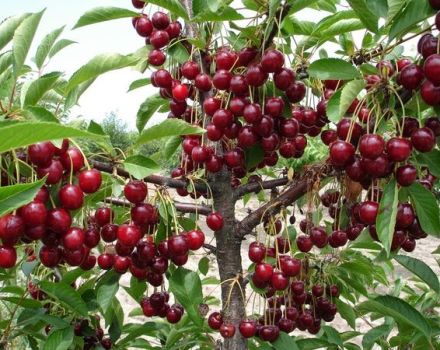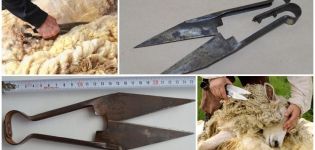Description and characteristics of Altai sheep breed, rules for their breeding
The Altai sheep breed is characterized by a large number of advantages. The animals are large in size and the correct constitution. They are characterized by a strong constitution and high productivity parameters. For pets to be profitable, they need to provide complete and quality care. However, it should include hygiene and balanced nutrition.
History of the Altai sheep breed
The Gorno-Altai breed was developed relatively recently. This happened at the beginning of the nineteenth century. The reason for the appearance of these animals was the need to breed individuals that can endure the difficult climatic conditions of the Altai Territory.
Initially, the sheep that lived in the region were small in size and had a thin build. They were characterized by not very strong immunity. As a result of breeding work, it is possible to obtain animals that were resistant to cold climates and colds. They were created on the basis of Siberian merino. Altai sheep belong to the category of meat and wool breeds, but most often they are bred specifically for wool.
Appearance and characteristics
These individuals are characterized by many features:
- large size, correct physique and strong constitution;
- developed muscles and the presence of 3 folds in the neck;
- flat back with a wide rump;
- wide and deep chest;
- high density and excellent quality of the fleece;
- white grease;
- dense and well covered head, limbs, abdomen.
The average weight of females reaches 65 kilograms, while the weight of males reaches 100 kilograms. Some individuals can weigh even more - their weight reaches 130 kilograms. The animals are characterized by a strong immune system and excellent parameters of endurance.
Pros and cons
The main disadvantage of these sheep is considered to be intolerance to high temperatures. Therefore, they should be bred in areas in which a cool climate prevails.
Requirements for maintenance and care
For breeding these animals, it is recommended to use the pasture-stall method. This allows the animals to walk in the fields and live under a roof.
An insufficiently active lifestyle prevents the full reproduction of animals.
For sheep to thrive, they need to stick to a specific schedule. It can be like this:
- 00 - sending sheep to pasture;
- 00 - return of animals to the stall for watering;
- 00 - driving out individuals into the field;
- 00 - return to the stall for the night.

These animals do not tolerate confined spaces. They need pasture. However, to raise sheep and rams at home, they need a corral - a sheepfold or a sheepfold. In these places, individuals overwinter and give birth.
It is recommended to build a dwelling from wood, and put clay on the floor. It is important to ensure that the room is fully ventilated. It must be dry and lighted. Inside, it is worth organizing a nursery, feeders and partitions. It is advisable to provide a separate place for the sheep. This provides females with rest during the period of decreased sexual activity.
Breed feeding
Sheep are herbivores. They eat about 2 kilograms of hay per day. Also, animals eat oats - 500 grams per day. In addition, it is permissible to use barley and bran for feeding animals. However, they should be applied in small amounts, as there is a risk of excessive weight gain.
Nutrients include legumes and clover. It is forbidden to use sedges and rushes for feeding. The use of combined feed is only suitable for industrial animal breeding. When raising sheep on small farms, this food option is too expensive.
Breeding rules
This breed is characterized by good reproductive functions. There are about 150 lambs per 100 females. To get a great offspring, breeders use simple techniques. When mating is carried out at an early age, the queens go hunting faster and give more cubs.
Such lambs, when released to pasture in the spring, feed well. This helps them fully get stronger by the arrival of the first winter. Weaning babies early also helps the queens to prepare faster for the next mating.
In addition, it should be borne in mind that 2 or more eggs mature at the same time in well-fed queens. Therefore, before the start of the hunt, it is recommended to feed the sheep vigorously so that they can grow up a larger amount of mass.

Frequent illnesses
Sheep of this breed are distinguished by strong immunity. However, sometimes they suffer from various pathologies. At the first symptoms of infection with scabies, parasites or other pathologies, a veterinarian examination and treatment of the wool with special preparations are required.
Otherwise, Altai sheep are subject to pathologies that are characteristic of all farm animals. To avoid infections, it is worth systematically vaccinating and conducting examinations with veterinarians.
The Altai breed of sheep has a number of advantages. These animals are characterized by a large muscular body and high productivity parameters. At the same time, pets are able to withstand the effects of low temperatures. This helps to grow them in regions with harsh climates.


